Artificial intelligence for artists: Top 20 AI services for every day
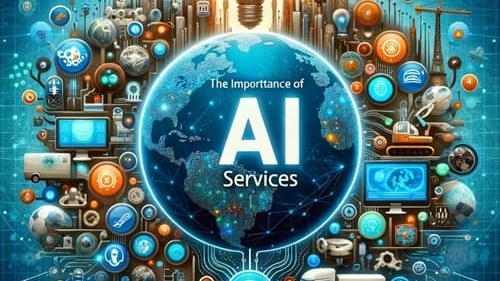
With the emergence of various digital art services and the rapid development of artificial intelligence, modern artists have gained new tools to bring their boldest ideas to life. AI for artists today is not just an additional app or a passing trend. It is a real opportunity to simplify workflows, experiment with different styles and forms, and explore new creative horizons. Thanks to AI art technology, artists can create unique illustrations, develop concepts for video games, enhance image quality, and even generate entire virtual worlds. In this article, we will explore how artificial intelligence is transforming contemporary art, what advantages it offers to creative individuals, and, most importantly, introduce the TOP 20 AI services that will be useful to every artist. Finally, we will look at practical cases of AI integration into artistic workflows and discuss the future prospects of AI in creativity.
How Artificial Intelligence is Transforming Contemporary Art
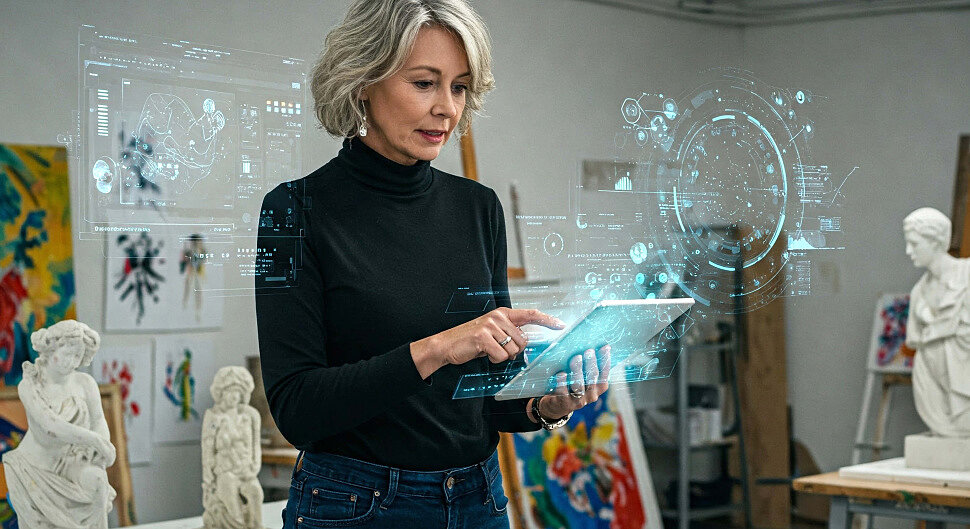
Over the past decade, artificial intelligence has profoundly impacted the way artistic works are created and perceived. Previously, artists primarily relied on traditional techniques and tools, but now they have access to new digital art services that significantly expand their possibilities. Machine learning algorithms and neural networks can not only replicate famous styles or analyze existing images but also generate unique ideas that redefine the boundaries of classical art.
With AI, artists can quickly experiment with different variations of colors, textures, and compositions, saving time on routine tasks. For example, neural networks can effortlessly transform an ordinary photo into a masterpiece in the style of Picasso or Van Gogh. Automated "work assistants" have also become a reality, capable of generating thousands of sketches for characters or locations in video games. Additionally, some AI-based platforms analyze existing artworks and help artists discover new, sometimes unexpected, approaches to their creative process.
Artificial intelligence is also actively influencing the art market, facilitating the digitization of galleries, hosting online exhibitions, and creating NFT tokens. Artists can sell their works or receive commissions from clients worldwide, minimizing geographical barriers. New AI art technologies are becoming a driving force that connects traditional painting with the limitless possibilities of the digital space.
On one hand, this opens up new opportunities for self-expression; on the other, it presents new challenges for the artistic community. Questions arise regarding authorship and the uniqueness of works when neural networks can replicate or combine the styles of other artists. Nevertheless, integrating artificial intelligence into creativity allows artists to push beyond established norms, making the process of creating art even more interactive and captivating.
Benefits of Using AI in Creativity: Why It Matters for Artists
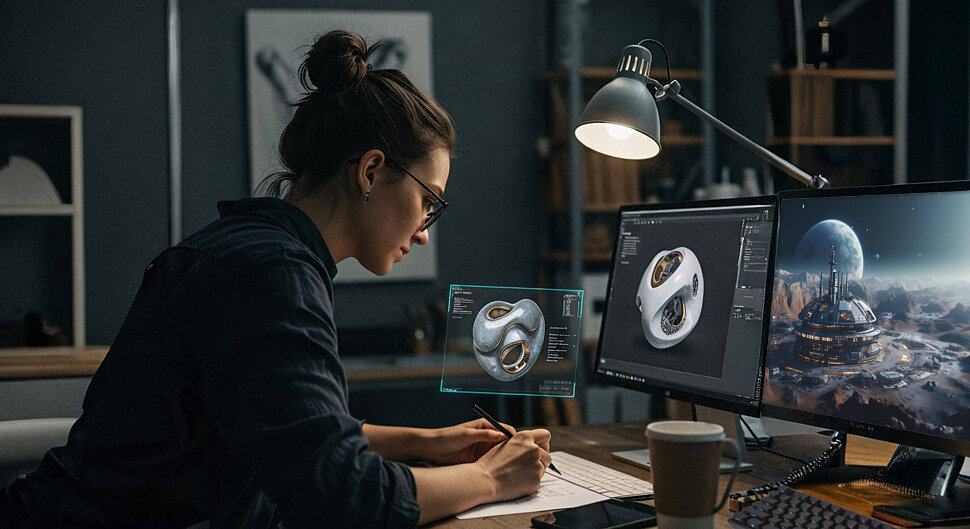
The integration of artificial intelligence into the world of art has provided artists with numerous benefits. First and foremost, it significantly optimizes workflows. Deep learning algorithms can handle routine tasks such as rapid image scaling, noise removal, and even automatic color correction. This saves artists considerable time and energy, allowing them to focus more on creativity.
Another major advantage is the incredible speed of prototyping. With AI art technology, multiple variations of the same idea can be generated instantly, compared, and the best one selected. Previously, this required a lot of time and manual effort, especially for complex illustrations or concept art. Now, just a few clicks in the right service are enough to generate sketches that can be further refined.
The third benefit is the ability to explore new directions more easily. Artificial intelligence often suggests unexpected variations of colors, shapes, and styles, encouraging artists to experiment creatively. Even experienced masters who have worked in a specific genre for years can discover something innovative for their development. AI services act as a source of inspiration, especially when an artist experiences creative block or wants to break away from traditional approaches.
Additionally, the commercial potential should not be overlooked. AI-powered digital art services enable the rapid creation of high-quality banners, illustrations, logos, and other graphic materials, which are in demand in marketing, gaming, and IT industries. Thus, AI for artists becomes a tool for earning income and expanding professional connections. Ultimately, artists proficient in AI technologies gain a competitive edge in the market and attract clients with their creative and technically sophisticated works.
TOP 20 AI Services: Categorized Overview
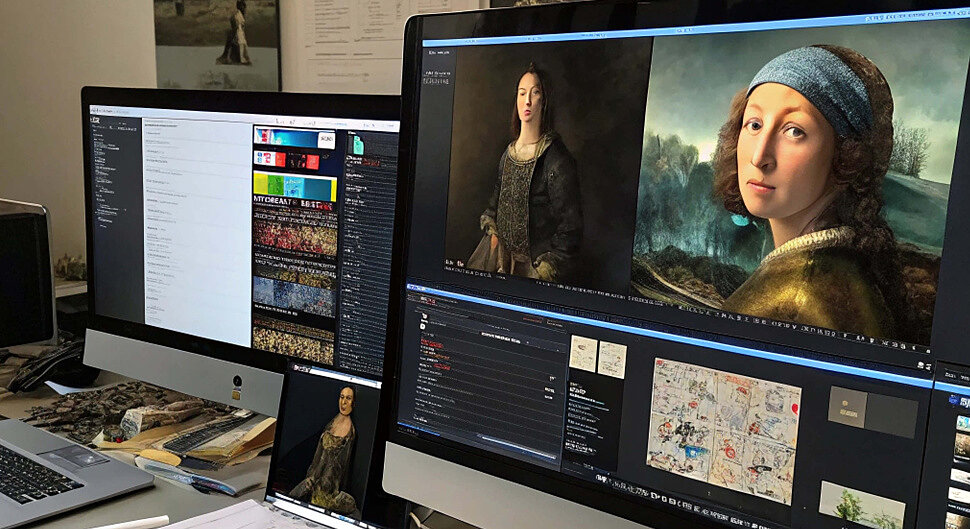
Below is a list of popular artificial intelligence services useful for various tasks – from idea generation to enhancing finished works. We will categorize them accordingly.
- Midjourney (image generation): Allows the creation of original illustrations based on text prompts. Ideal for quick prototyping of concept art.
- DALL-E 2 (image generation): An improved version of OpenAI's popular neural network, capable of generating unconventional, sometimes surreal images from given descriptions.
- Stable Diffusion (image generation): An open-source solution that can be deployed locally. Gives artists more control over the generation process and allows experimentation with additional parameters.
- Artbreeder (portrait generation): Specializes in creating and blending portraits, landscapes, and characters. Enables "crossbreeding" of different styles to find unique visuals.
- DeepArt (image stylization): Transforms photos into paintings in the style of famous artists. Used for quick and creative "processing" of images.
- Runway ML (video and graphic editor): Offers a wide range of real-time processing tools, including neural network-based filters, background removal, and more.
- NightCafe (online image generation): A platform with a powerful library of models and filters. Enables quick creation of vibrant art pieces based on text prompts.
- Let's Enhance (image quality enhancement): Uses artificial intelligence to upscale images without losing sharpness or detail.
- Fotor (online editor): Features an AI Retouching function that automatically corrects minor flaws in photos, adjusting lighting and colors.
- WOMBO Dream (deep stylization): Creates fantastic, surreal images based on brief text descriptions. Perfect for discovering unconventional ideas.
- Jasper Art (text and visual generation): An AI platform that assists with both copywriting and illustration creation based on specified scenarios.
- Gemini: In addition to the text assistant, Google has launched image generation on demand.
- Lensa AI (portrait retouching): Automated portrait editing that recognizes facial features and subtly enhances them while maintaining a natural look.
- VanceAI (image restoration and editing): Offers tools for noise removal, detail enhancement, and restoration of old photos.
- NVIDIA Canvas (real-time landscape generation): Turns simple brushstrokes into realistic landscapes with mountains, trees, water, and more.
- Clip Studio Paint (AI Plugin) (illustration and comics): A software for artists with intelligent tools that simplify the creation of complex scenes and characters.
- Adobe Photoshop (Neural Filters) (AI-powered photo editor): Built-in neural filters automatically enhance clarity, adjust facial expressions, and even add aging effects.
- MyHeritage AI (animated retro photography): Though primarily focused on digitizing family relics, artists can use it for interesting creative experiments.
- Runway Gen-1 / Gen-2 (AI video generation): Platforms for transforming regular videos into stylized animations, useful for artistic projects and advertising concepts.
- Canva (AI Modules) (social media design): Features built-in AI tools that suggest layouts and graphic elements based on user preferences.
Each of these services has unique features and advantages, and their thoughtful combination will help you realize even the most complex creative ideas.
Practical Cases: How Artists Integrate AI into Their Workflows
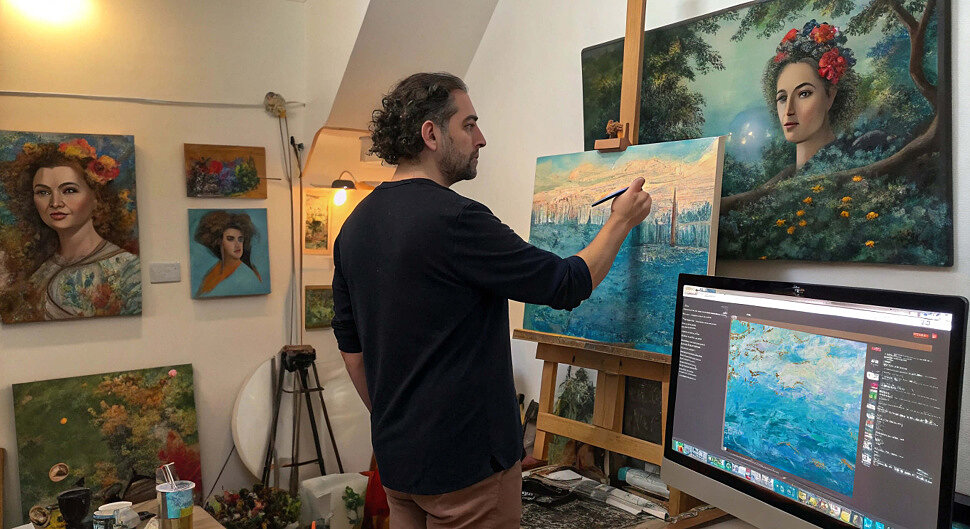
Real-world examples of artists successfully using AI clearly demonstrate how flexible the combination of traditional and digital techniques can be. One of the most striking cases is the creation of concept art for video games. Artists often use image generation with Stable Diffusion or Midjourney to quickly get initial sketches of characters and locations. These sketches are then refined manually in professional software like Photoshop or Clip Studio Paint, where AI can again assist in detailing fine elements or adjusting textures.
Another common scenario is digital restoration and enhancement of old paintings or photographs. Services like Let’s Enhance and VanceAI allow the restoration of lost fragments, improve sharpness, and increase brightness without distorting the original artistic style. Previously, this process required weeks of manual work and high expertise, whereas today it has become more accessible and faster thanks to AI.
In the field of digital painting, artists frequently use Artbreeder to create distinctive portraits that serve as references for oil or acrylic paintings. Similarly, NFT artists are increasingly leveraging neural network-based tools to diversify their token collections: AI generates visual variations, and the author adds final touches, selling the work as a unique digital asset.
Thus, digital art services help combine manual craftsmanship with automated shape and color exploration. This allows artists to maintain their unique style while utilizing technology to speed up and improve results. It is safe to say that the effective implementation of AI enables artists to respond to demand more quickly, experiment with different directions, and discover new dimensions of their creativity.
The Future of AI in Art and Tips for Artists
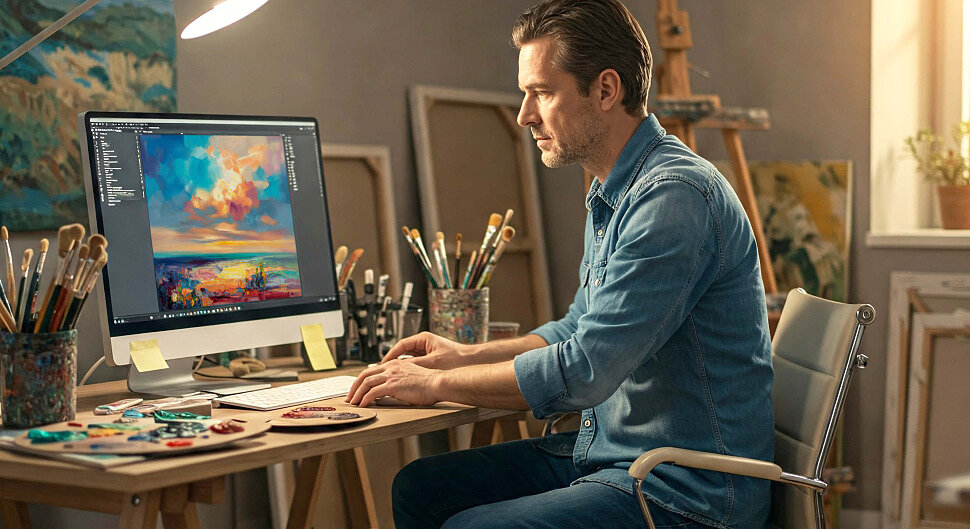
Artificial intelligence continues to develop at an incredible pace, and its impact on the art world will only grow stronger. In the future, we can expect even more flexible and precise models capable of analyzing and reproducing a wider range of artistic styles. AI may soon move from providing fragmented assistance in image creation to offering comprehensive support at every stage, from idea generation to promoting works on specialized platforms.
On one hand, artists will gain more freedom and tools. On the other, competition in digital art will intensify as more beginners will be able to reach high technical levels in a short time. The main advice for artists is to learn how to harmoniously combine their unique style with AI capabilities. Do not be afraid to experiment: explore different platforms, learn from case studies of fellow artists, and continue practicing.
Secondly, it is essential to develop adaptive skills. Technology evolves, new digital art services and trends emerge. The ability to quickly master new AI tools and integrate them into one’s practice provides a significant competitive advantage. It is equally important to study legal aspects, including copyright, licensing, and contracts for the creation and sale of AI-assisted works.
Finally, be open to collaboration. Partnerships between artists, AI developers, and researchers can lead to unique projects that influence the development of global art. Combining multiple disciplines (art, technology, marketing) in a single project can create an incredibly powerful creative synergy. After all, the most exciting ideas that inspire and push the boundaries of modern artistic practice are often born at the intersection of different fields.
Frequently Asked Questions
How can I prove copyright ownership of a painting?
How much does a painting appraisal cost?
How can I verify the authenticity of a painting?
Where can I order a painting appraisal?
How does a painting appraisal process work?
How can I obtain a certificate for a painting?
Have questions? We are happy to assist you +38 063 247 8102
